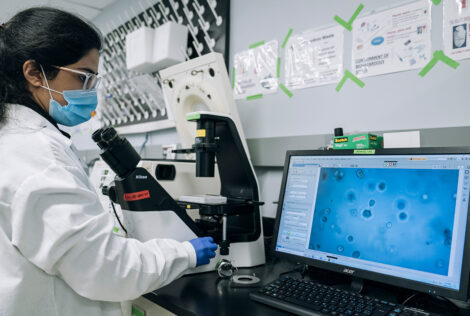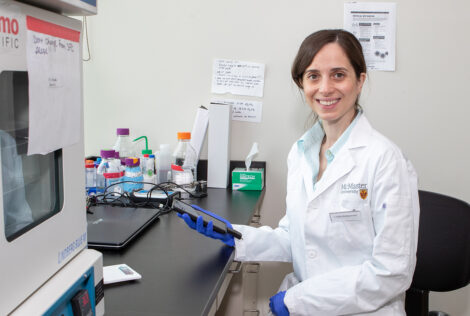

McMaster Engineering associate professor Greg Wohl is part of a team that made a world first cancer diagnosis in the fossil of a dinosaur.
The aggressive malignant bone cancer – an osteosarcoma – was discovered in the dinosaur bone by researchers from McMaster University and The Royal Ontario Museum (ROM), with support from researchers from the University of Toronto and the Royal Tyrell Museum in Drumheller, Alta.
Using his expertise in micro-computed tomography (microCT) scanning, Wohl scanned a human fibula with osteosarcoma so it could be compared to the dinosaur bone, which was already scanned and carefully cut into thin sections at the ROM.
“The 3D microCT data images and the pathology sections allowed Drs. Mark Crowther and Snezana Popovic to see how osteosarcoma in the human bone compared to the images of the dinosaur bone,” says Wohl, co-director of the Integrated Biomedical Engineering and Health Sciences program (iBioMed) and an associate professor in mechanical engineering.
In his own research, Wohl says he uses microCT scanners regularly to see how bones adapt to mechanical loading or respond to damage. They can capture the porous structure in bones more accurately than a clinical CT scanner found at hospitals, he says.
The high-resolution scans of the two bones were analyzed to confirm the cancer diagnosis in the fossil.
“It was exciting to see how everyone brought a little something to the table as we came to the realization of how impressive this discovery was, and how unique it was that we brought such a multidisciplinary team with modern technology and skills to make this diagnosis with such overwhelming evidence,” says Wohl.
The team’s findings were recently published in the medical journal The Lancet Oncology.
Read more about the research in The Globe and Mail and on McMaster’s Brighter World website.


